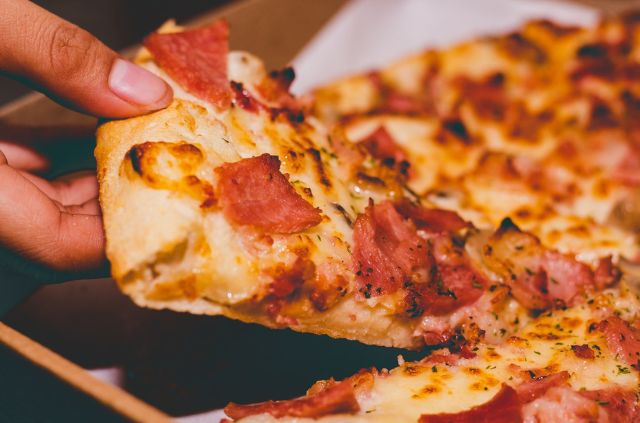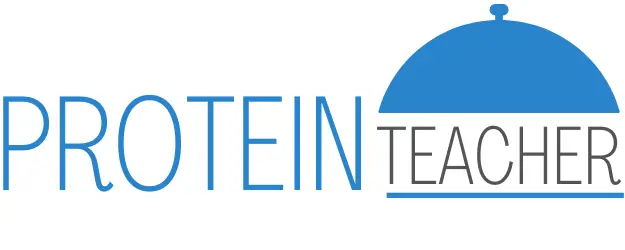Flexible Dieting 101: How to Count Macros
Are you looking for a realistic weight loss plan where you can eat the foods you like and still lose fat? Flexible dieting is the answer. This meal plan tracks foods you eat throughout the day, without going over your daily limit.
What is Flexible Dieting?
Flexible dieting allows you to eat any type of food in moderation, without the guilt. Most diets use restriction to achieve a weight loss goal. They don’t allow you to eat out at a restaurant, or enjoy a piece of birthday cake.
This is why flexible dieting separates itself from other meal plans. Flexible dieting is so different because it doesn’t come with this level of restriction other diet have.
You can pretty much eat whatever you want, as long as you understand what your body requires each day. This means that you can lose weight, but you won’t be miserable in the process.

Understanding Nutrition Labels
Looking at a nutritional label can be overwhelming to say the least. There are numbers, percentages, and words we may or may not understand.
The three most important words on a nutrition label are carbohydrates, fat, and protein. These are also known as macronutrients (macros) and they are the foundation of flexible dieting.
In addition to counting calories, tracking these three macros is critical. Macros vary by age, activity level, and many other factors. A 20 year old college athlete will not have the same daily macros as a 50 year old accountant.
How to Count Macros
Counting macros may seem confusing at first. But like I mentioned above, you really just need to be aware of your carbs, fats, and protein.
Once these numbers are figured out it just comes down to logging them in a fitness app. And as you gain more experience, you’ll be able to track each meal in no time.
Try a Calculator
There are many different macro calculator tools, but they should be used to get a general understanding of the range you should be in.
These tools will have you plug in your age, weight, height, and activity level. It will then tell you how many carbs, fat, and protein you should eat each day.
The problem with these macro calculators is that they don’t always work. The biggest reason for their inaccuracy is they fail to measure your metabolism.
We all know at least one person who can eat anything they want and not pack on weight. This kind of information is needed to really figure out how much you should be eating.
Use a Food Scale
I’m not one to push products on people, but accurately counting macros is going to be very hard without a food scale. These tools make flexible dieting so much easier and they aren’t that expensive.
They’re also very useful for understanding portion sizes. Have you ever seen a serving size of peanut butter? Let me tell you from experience that a tablespoon is totally different from an actual spoon.
When you can accurately see a serving size, it becomes clear how easy it is to overeat. Using a food scale really made me view nutrition differently.
Figure Out Your Goals
Unfortunately, there is no one size fits all plan when it comes to counting macros. Some people want to lose fat, build muscle, or maintain their current physique.
When looking to lose weight, your body will need to be in a caloric deficit. In other words, you need to eat less calories than you would normally eat to maintain your weight.
But this is just one piece to the puzzle. When looking to build muscle for example, your body needs more calories.
But if you sit at a desk all day, you won’t need as many calories as a professional athlete who wants to build muscle. Figuring out your goals and recognizing your body type is just one step in macro learning.
Experiment
Your age and activity level are just some factors that contribute to how much (or little) you should be eating. You need to do some experimenting to find out how your body responds to food.
Try and calculate your macros one day while eating completely normal. Be realistic with this task and measure all food you ate throughout the day.
The data you have for this day will be considered your maintenance macros. So if you want to lose weight, try decreasing your macros slightly.
Just like you would need to increase them if looking to build muscle. Remember not to make any drastic changes. As slow weight fluctuations will lead to long term results.
Flexible Dieting Pros
There are a few benefits to flexible dieting that make it different from other meal plans. It can be an effective way to lose weight, due to the precise methods of tracking food.
And it’s also one of the most realistic diet plans, as you can eat the foods you enjoy without feeling guilty.
Eat the Foods You Want
With flexible dieting, you don’t have to worry about certain kinds of foods being off limits. There are hundreds of diet plans out there from low fat, to zero sugar.
The problem is that most of these plans will restrict some of your favorite food groups. With flexible dieting nothing is off limits, as long as you eat in moderation and don’t exceed your daily macros.
Stop Binge Eating
There are many different forms of binge eating, but some of it comes from restriction. When we restrict a certain food group from our diet, we naturally crave it.
So when following a low carb diet for example, that first slice of pizza will taste like heaven. But then you’ll have another, then another, and so on.
Flexible dieting can help prevent binge eating by eliminating food restriction altogether. When you’re allowed to eat the foods you want in moderation, there isn’t a need to overload on them.
The key word here is moderation. Although flexible dieting can help with binge eating, you still have to be mentally aware of how much food to eat.
Flexible Dieting Cons
Just be aware that flexible dieting does have some drawbacks. It can be tedious figuring out what your macros are and tracking them everyday.
Flexible dieting also isn’t a meal plan where you get to eat junk food all day. It’s not a get out of jail free card – you still need to put in the work.
Can Work Against You
If you’re saving all your macros for one meal, flexible dieting can end up working against you. What does this mean?
A massive amount of burgers and ice cream for dinner may sound good, but you will be waiting all day to eat. That means you won’t be eating anything for hours, which can leave you tired, angry, or both!
Time Consuming
Some people don’t mind tracking their macros day in and day out, but it can get boring. The most accurate way to track your macros is by using a food scale.
A food scale can help you gain a better understanding of specific portions, but it takes time. Have you ever dreamed of measuring ketchup by the gram? If not then flexible dieting isn’t for you.
Is Flexible Dieting for Me?
At the end of the day flexible dieting isn’t for everyone. But it can be a very effective fat loss plan if you have struggled with weight loss in the past.
Flexible dieting works because of data. When counting macros, there is a level of precision with everything you’re eating throughout the day.
Flexible dieting simply works because of this accuracy. All you have to do is stay at, or below your daily macro limit and the results will show. If this sounds too good to be true, then give it a try.
Just remember that flexible dieting is not magic. You still need to put in the work and give it some time for this diet plan to be effective.
